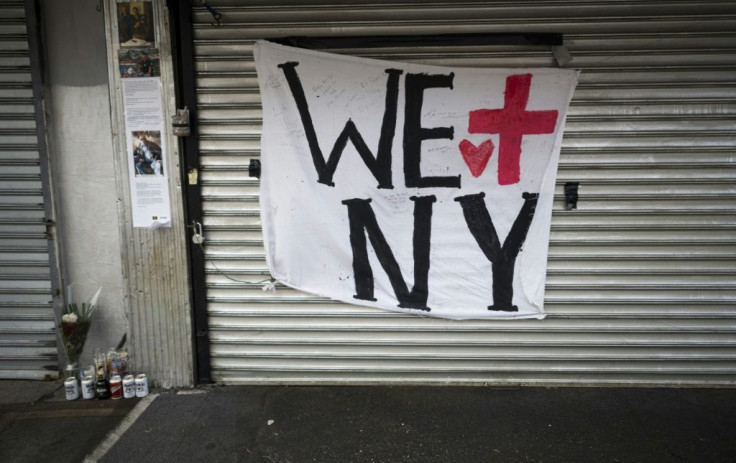Coronavirus NYC News: Mayor De Blasio Says Reopening 'A Few Months Away' As Cases Decline
The COVID-19 pandemic is finally leaving New York City and families of about 13,000 people are still in mourning. In its wake, the Big Apple is taking some early steps to return not to normal but to what Mayor Bill De Blasio says will leave “New York stronger than ever.”
The rate of infections in NYC has been steadily dropping. According to NYC Health, 6,207 new cases were reported April 6 and only 700 new cases were reported April 29. The New York Post reported a similar drop. De Blasio said his administration is taking steps to bring the city out of the crisis but he warned, "If you open up too soon you could pretty much guarantee a resurgence of the disease,” referring to scientific data.
De Blasio’s “steps” that could take months to accomplish include testing and forming a series of advisory groups that will meet weekly beginning in May. One group will discuss ways to reopen the city. Another is The Fair Recovery Task Force tasked with formulating a recovery effort to rebuild the economy. Another group will work to address the racial disparity in COVID-19 infections and deaths.
The mayor’s office said last week, "The goal is not to go back to the status quo, but to spur a recovery that confronts deep inequities, reaches into every neighborhood, and leaves New York stronger than ever.”
The references to addressing racial disparities and confronting deep inequities seem to support accusations that some politicians are using the pandemic to promote political agendas.

The mayor himself said in two Twitter messages, “In May we’ll have stronger enforcement efforts, we’ll pass out free face coverings and we’ll use all the tools we have to assertively make progress. We have the chance to do something transcendent when it comes to testing and tracing” and, “Our open streets initiative is another way we’ll encourage social distancing. We’ll open 40 miles in May and up to 100 miles overall. The first streets will open on Monday, creating 7 miles of car-free space.
Another Twitter message put the mayor in some hot water with the city’s Jewish community after the funeral of Rabbi Chaim Mertz in Brooklyn was halted for allegedly violating social distancing requirements that were in force.
The message said, “My message to the Jewish community, and all communities, is this simple: the time for warnings has passed,” de Blasio tweeted Tuesday night. "I have instructed the NYPD to proceed immediately to summon or even arrest those who gather in large groups. This is about stopping this disease and saving lives. Period."
The virus has not been proven to target people by race, ethnicity, or religion. Statistics show that older people with existing health problems are most at risk, that more men are infected, and that people with type O blood may be more resistant.
The racial overtones might be one consequence of the coronavirus spreading easier in dense urban locations that are generally occupied by minority and low-income residents. It will certainly be a challenge to change demographics that existed before the COVID-19 pandemic when many people in rural areas who have seen their lives disrupted are anxious to get back to the “old” normal.
© Copyright IBTimes 2025. All rights reserved.





















